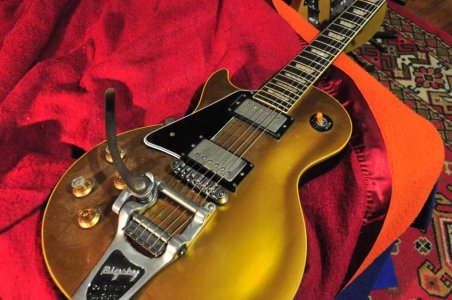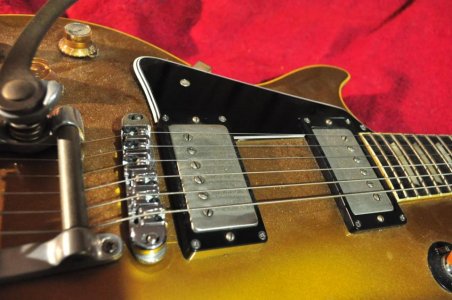Re: What was the metal composition of the 1950's and 60's Gibson humbucker covers ?
Hi Itsabass.
Thank you for your reply.
I have several metal humbucker covers in a box including raw unplated nickel covers, nickel plated brass covers, chrome plated brass covers, chrome plated copper covers and raw brass covers.
I was hoping to know what the actual covers used on the 1950's and 60's Gibson guitars were so that I could then choose the closest equivalent metal covers from my collection for my guitars which will have covered PAF style pickups.
Of course the effect on the tonality by the pickup cover is only a relatively small part of the tonal equation, and rolling off the guitar Tone control produces a far more noticeable effect on the tonality, however the metal covers do have an audible effect so therefore they are a small factor in the 1950's and 60's Gibson PAF sound, and the metal covers of different metal construction are a cheap and simple way to affect the tonality without needing to buy expensively priced "vintage mojo" metal covers.
I have a Marshall JTM-45 amplifier and a 1970's Marshall quad box with two 1967 Vox branded Celestion G12 speakers with an alnico magnet, and two Celestion "The Vintage" G12 speakers with a ceramic magnet, and I also design and build my own preamp and overdrive circuits voiced after the old Marshall, Fender and Vox etc amplifiers as well as the 1960's fuzz boxes and treble booster units so therefore these allow me a very wide range of EQuing and tonality that realistically produce the typical 1960's and 70's tonalities.
One crude and simple and non destructive way to get an approximate idea about what metal the covers are made of is by getting a sharp knife and then scraping away small section of the nickel or chrome or gold plating on the inside wall of the metal cover in order to see what metal is behind the plating.
If anyone who has an actual 1950's or 60's or 70's Gibson or Epiphone metal cover is willing to do this scrape test but they are worried about the resale value of the vintage metal cover, then a good place to carefully do this scrape test is the small section where the solder normally goes so that the small scraped section could then be covered up with a new layer of solder and therefore it would no longer be visible.
Of course this scrape test is not the same as a destructive scientific metalurgical test, but it gives some approximate idea of what kind of metal the cover is made of.
I have done this scrape test on several of my own pickup covers, and most of them have a yellow coloured metal behind the plating which I assume is brass. A few have an orange coloured metal which I assume is copper, and others including my Gibson and Seymour Duncan covers and also the raw nickel covers have a silver coloured metal which I assume is nickel or German nickel silver or nickel steel.
Most of my metal covers including my raw unplated nickel overs are not attracted to a magnet but a few including some of the Gibson covers do have a light attraction to a magnet.
It would be good if someone who has an original 1950's, 60'sor 70's Gibson metal cover also tested it with a magnet to see if it is attracted to the metal.
There is a website about PAF pickups which says that "Most PAF pickups have a brass cover with nickel plating. The earliest 1956 models are known to have a brushed stainless steel cover." however a few days ago I came across a mylespaul forum thread where it was stated by someone who has examined 1950's PAF pickups that the website was in error to claim that the the PAF covers were nickel plated brass and he said that there was no brass in the 1950's PAF metal covers because Seth Lover knew that brass reduces the treble response, and instead the covers were in fact nickel in order to be as transparent as possible.
kziss.
A handful of my thoughts on the original question/s:
1. It probably varied. There is probably no one definitive answer.
2. The best way to find out for sure is to sacrifice a wide sampling of original covers for testing. Doing that would be altering rare historical artifacts just for the pursuit of entirely useless knowledge.
3. Those who have tested original covers have probably not used a large sample, but only that one cover. Their results are therefore just one piece of information, not a complete and definitive answer.
4. Those who have paid for such testing probably have a decent financial interest in keeping the results private. Nobody who "knows" will probably tell us anyhow.
5. Tonally speaking, it really doesn't matter, as long as you get somewhat close to what the original materials probably were (i.e. don't use brass or something). Knowing the answer wouldn't help you "nail" any particular tone.
6. There are such things as amps, outboard equalizers, and studio and live sound equipment and manipulation that can easily adjust for any differences that do exist due to materials (and then some). You can "nail" your sought after tones much better by simply being good at operating an e.q. than by chasing such information.


